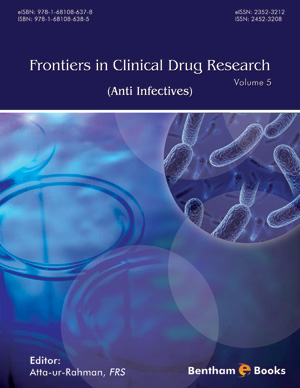Abstract
The currently available antimicrobial drugs against pathogenic microorganisms are inadequate to cope with the challenges of the newly emerging multidrug-resistant (MDR) pathogens. Other shortcomings include their partial absorption in the blood system accompanied with gastrointestinal problems such as vomiting, nausea and diarrhea. To overcome these limitations, an alternate therapeutic approach has to be developed through a combinatorial approach of antimicrobial agents with nanomaterials called “nanoantibiotics”. Several research groups have already focused on the development of novel nanoantibiotics (nAbts) that will be efficient with better pharmacokinetic profiles and fast absorption in the blood system. The nAbts will open up new avenues in drug research, but ample work is needed on its development for industrial applications. In the current chapter, we will explain the current status of different nAbts loaded systems, their release mechanisms, key targets, formulations and mode of action. We will also describe the important features of nAbts such as size, surface charge, hydrophobicity/philicity, biofilm formation, stimuli-receptive and functionalization against MDR pathogens.
Keywords: Antimicrobial Resistance, Bacterial Infections, Drug Delivery, Functionalization, Loaded Systems, MDR Pathogens, Mode of Action, Microbial Factors, Nanoantibiotics, Nanoparticles.Antimicrobial Resistance, Bacterial Infections, Drug Delivery, Functionalization, Loaded Systems, MDR Pathogens, Mode of Action, Microbial Factors, Nanoantibiotics, Nanoparticles.






















